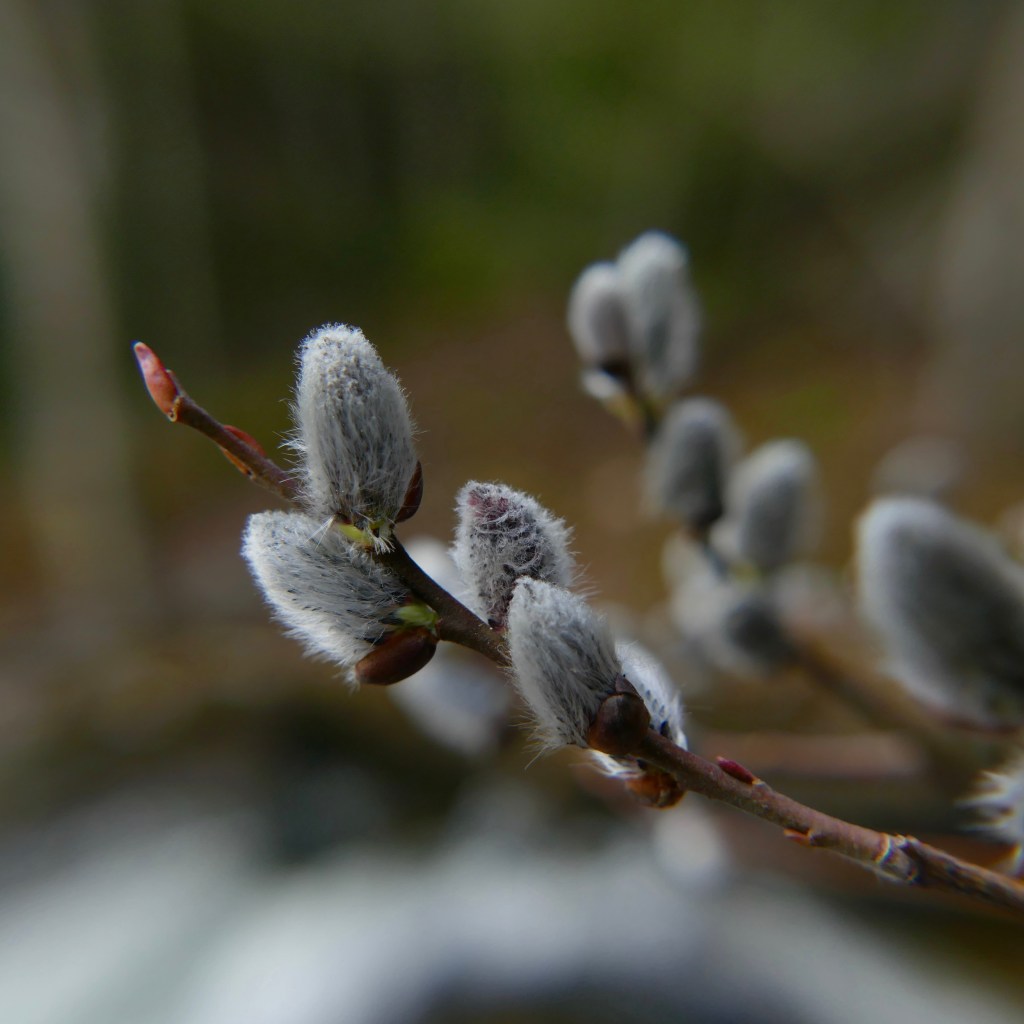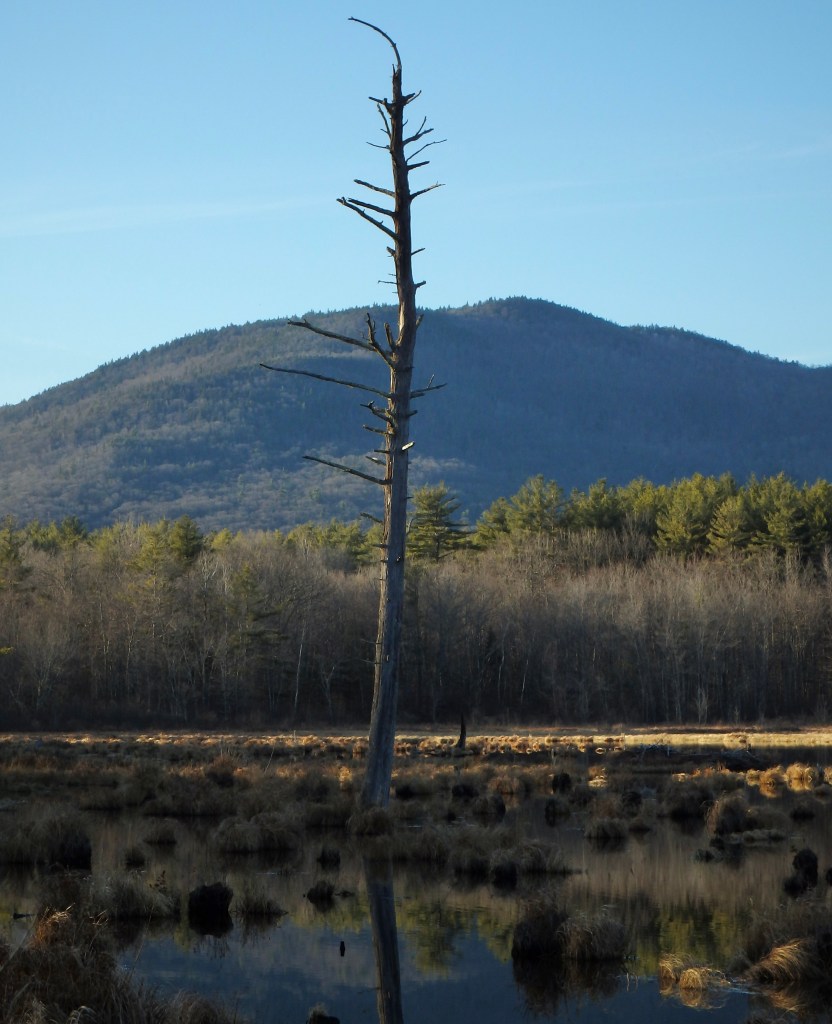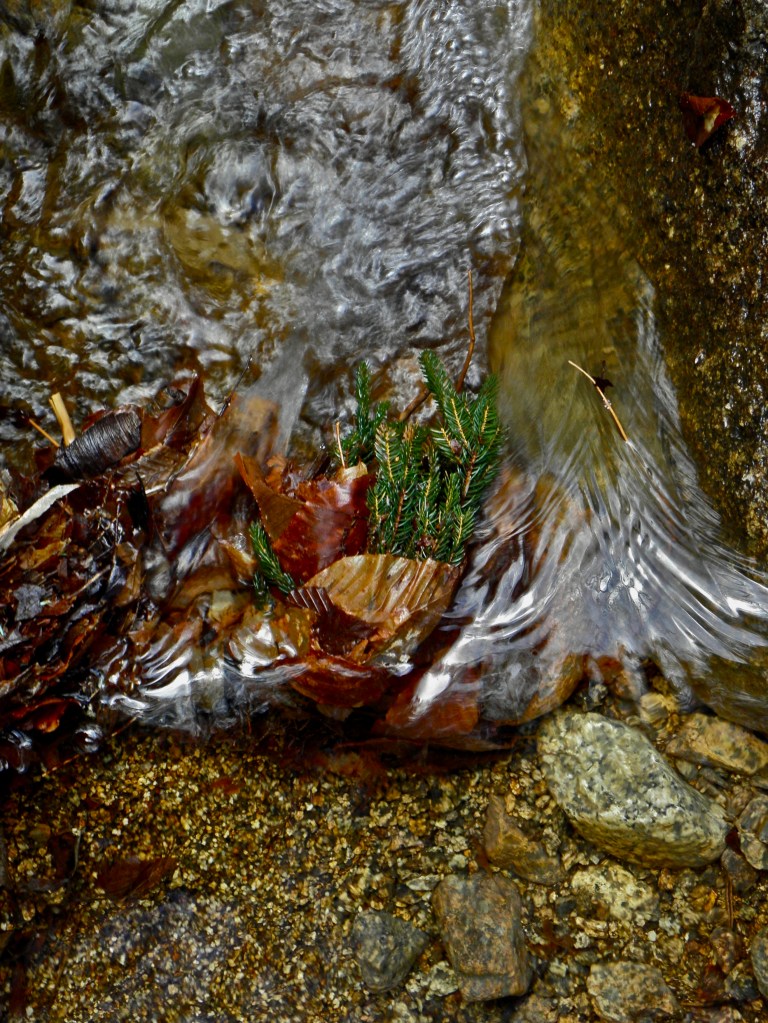in Thoreau’s Journal:

Bluets out on the bank by Tarbell’s spring brook, maybe a day or two.

in Thoreau’s Journal:
The may-flower on the point of blossoming— I think I may say that it will blossom to-morrow. The blossoms of this plant are remarkably concealed beneath the leaves—perhaps for protection— It is singularly unpretending—not seeking to exhibit or display its simply beauty. It is the most delicate flower both to eye & to scent as yet—

Its weather worn leaves do not adorn it. If it had fresh spring leaves it would be more famous & sought after.
in Thoreau’s Journal:

On Conantum Cliffs whose seams dip to the NW at an angle of 50º (?) and run NE and SW I find today for the first time the early saxifrage saxifrage vernalis in blossom—growing high and dry in the narrow seams where there is no soil for it but a little green moss.—following thus early after the bare rock—it is one of the first flowers not only in the spring of the year but in the spring of the world.—It can take advantage of a perpendicular cliff where the snow cannot lie & fronting the S….

This is the place to look for early blossoms of the saxifrage—columbine—& plantain leaved everlasting—the 1st 2 especially— The crevices of the rock (cliff) make natural hot houses for them—affording dryness warmth & shelter.
in Thoreau’s Journal:
When the wind is still cool elsewhere, I glance up some warm southern slope, sunny and still, where the thinly scattered blades of green grass, lately sprung, already perchance begin to wave, and I am suddenly advertised that a new season has arrived.

This is the beginning of that season which, methinks, culminates with the buttercup and wild pink and Viola pedata. It begins when the first toad is heard.
in Thoreau’s Journal:

As we stand by the Mt on the Battleground––I see a white pine dimly in the horizon just north of Lee’s Hill––at 5 1/2 Pm, its upright stem & straight horizontal feathered branches––while at the same time I hear a robin sing. Each enhances the other. That tree seems the emblem of my life––it stands for the west––the wild. The sight of it is grateful to me as to a bird whose perch it is to be at the end of a weary flight. I am not sure whether the music I hear is most in the robins’ song or in its boughs. The pine tree that stands on the verge of the clearing––whose boughs point westward. Which the villager does not permit to grow on the common or by the road side.–– In whose boughs the crow and the hawk have their nests.
in Thoreau’s Journal:
Sat on the smooth river bank under Fair Haven— The sun-light in the wood across the stream.

The scent of the earliest spring flowers! I smelt the willow catkins today. Tender––& innocent––after this rude winter––yet slightly sickening–– –– Yet full of vernal promise. The odor–– How unlike any thing that winter affords––or nature has afforded this 6 months! A mild sweet vernal scent–– Not highly spiced & intoxicating as some erelong––but attractive to bees–– That early yellow smell. The odor of spring––of life developing amid buds––of the earth’s epithalamium–– The first flowers are not the highest scented––as catkins––as the first birds are not the finest singers––as the black-birds & song sparrows &c. The beginnings of the year are humble. But though this fragrance is not rich––it contains & prophecies all others in it.



in Thoreau’s Journal:

The water on the meadows is now quite high––on account of the melting snow & the rain….Would it not be worth the while to describe the different states of our meadows which cover so large a portion of the town. It is not as if we had a few acres only of water surface––From every side the milk-man rides over long causeways into the village —& carries the vision of much meadow’s surface with him into his dreams.–– They answer to moods of the Concord mind.–– There might be a chapter the Sudbury meadows––the humors of the town–– …I think our overflowing river––far handsomer & more abounding in soft and beautiful contrasts––than a merely broad river would be–– A succession of bays it is––a chain of lakes––an endlessly scalloped shore–– –– rounding wood & field––cultivated field & wood & pasture and house are brought into ever new & unexpected positions & relations to the water. There is just stream enough for a flow of thought––that is all. –– Many a foreigner who has come to this town has worked for years on its banks without discovering which way the river runs.
in Thoreau’s Journal:
In whatever moment we awake to life, as now I this evening, after walking along the bank and hearing the same evening sounds that we heard of yore, it seems to have slumbered just below the surface, as in the spring the new verdure which covers the fields has never retreated far from the winter.




in Thoreau’s Journal:
Saw the first blossoms (bright-yellow stamens or pistils) on the willow catkins to-day. The speckled alders and the maples are earlier then. The yellow blossom appears first on one side of the ament and is the most of bright and sunny color the spring has shown, the most decidedly flower-like that I have seen.

It flowers, then, I should say, without regard to the skunk-cabbage, q. v. First the speckled alder, then the maple without keys, then this earliest, perhaps swamp, willow with its bright-yellow blossoms on one side of the ament. It is fit that this almost earliest spring flower should be yellow, the color of the sun..
in Thoreau’s Journal:

A pure brook is a very beautiful object to study minutely. It will bear the closest inspection, even to the fine air-bubbles, like minute globules of quicksilver, that lie on its bottom. The minute particles or spangles of golden mica in these sands, when the sun shines on them, remind one of the golden sands we read of. Everything is washed clean and bright, and the water is the best glass through which to see it….

You must be logged in to post a comment.